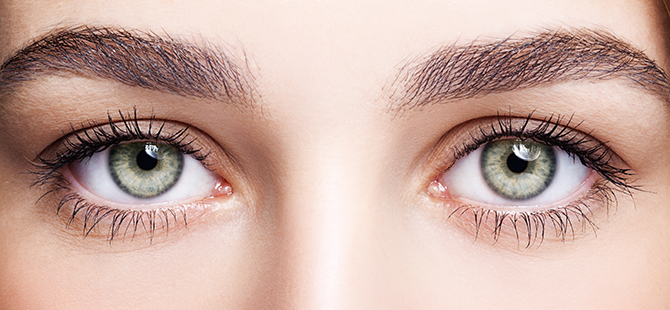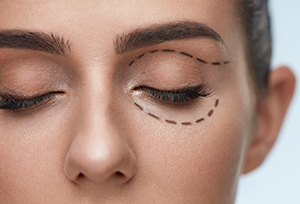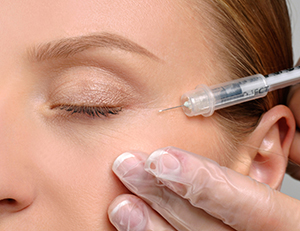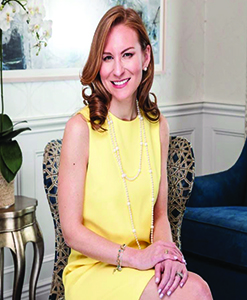BRIGHT EYES
Restore, Rejuvenate And Look 10 Years Younger

By Shana Ackerman
The eyelids are usually one of the first regions of the face to show signs of aging. When people enter mid- to late-thirties, the upper eyelids can develop a skin that hangs down, and the lower eyelids can build up fatty bags and dark circles, resulting in a tired appearance. Eyelid surgery (blepharoplasty) can effectively correct the changes many people experience as they age. According to the American Society of Plastic Surgeons, over 206,500 eyelid surgeries were performed in 2018. Restoring the youthful appearance of a person’s eyes can help define the cheeks, sustain the shape of the eyes, and reduce a tired appearance.
New York Lifestyles spoke with nationally recognized, New York-based Board Certified Plastic Surgeon, Dr. B. Aviva Preminger about the blepharoplasty procedure. “When looking at the eyes, I always consider four features of the eye appearance: brow position, upper eyelids, lower eyelids, and the corners of the eyes,” says Dr. Preminger. “It is important to recognize all of the areas of the eyes because when people look at one another, they are not just looking at the upper or lower eyelids, the eyes are one of the first things they notice.
“When performing eye rejuvenation surgery, I am restoring the youthful appearance of an individual. People come in, and they tell me that they have tired-appearing eyes,” explains Dr. Preminger, “that their upper eyelids look heavy. Patients are pleased with the results of their blepharoplasty. No one knows what they’ve had done, so when they go back to work, people say to them, ‘You look like you got some good rest.’ Patients feel good about themselves. They don’t look tired anymore. They feel rejuvenated.”
Here’s what we learned from Dr. Preminger about eyelid surgery.

What is blepharoplasty?
Eyelid surgery medically referred to as a blepharoplasty, is a surgical procedure that will improve the appearance of the skin of the eyelids as well as fatty bags under the eyes. The surgery can be performed on the upper eyelids, lower eyelids, or both. If you want to improve your appearance, a blepharoplasty can restore the youthful appearance and rejuvenate the area surrounding the eyes.
What conditions can a blepharoplasty treat?
• Loose or sagging skin that creates folds or deforms the contour of the upper eyelid.
• Fatty deposits that appear as puffiness or fatty bags below the eyelids.
• Drooping lower eyelids that reveal whites of the eyes beneath the iris.
• Excess skin and wrinkles of the lower eyelids.
Who is a good candidate for blepharoplasty?
• Nonsmokers.
• Healthy individuals with no medical conditions that will impair healing.
• Individuals with a positive outlook and realistic goals.
• Individuals who do not have serious eye conditions.

What should I expect when I have a blepharoplasty?
Blepharoplasty is one of the most successful and satisfying operations in facial plastic surgery. Although you will continue to age naturally, the results of eyelid surgery are long lasting—often five to ten years. In most cases, you will see a dramatic change within two weeks, but it can take up to a year for the incision lines to fully refine. Following your blepharoplasty procedure, you can expect a significant improvement in your eyes’ appearance.
Are there different versions of a blepharoplasty surgery?
• Blepharoplasty can remove excess skin or fat from the upper or lower eyelids or both.
• An upper eyelid blepharoplasty, sometimes called an eyelift, can elevate an upper eyelid margin, removing excess skin and reducing the droopy appearance.
• A lower eye blepharoplasty is a reductive procedure to remove skin and fat to reduce under eye wrinkles, skin redundancy, and fat bulges. The lower eyelid procedure may be performed via an incision on the lower lid skin or wholly hidden on the inner surface of the lower eyelid which allows for no scar at all.
Many people, however, benefit from doing both at the same time as it allows me to achieve the most balanced rejuvenation with just one recovery period. Depending on the extent of the surgery, the procedure can either be performed in my office under local anesthetic, as an outpatient procedure or using an anesthesia at the surgical center.
 Dr. Preminger
Dr. PremingerWhat is the recovery process?
After one week, most patients return to work. Within one to two weeks, most patients resume light exercise and after two to three weeks, more strenuous activity. Within one to two months, most of the swelling is completely resolved.
What else should I know when looking to restore my youthful appearance and reduce my tired look?
Injections of neurotoxins, such as Botox® or Dysport® and fillers, such as Restylane®, can help tighten sagging skin and smooth wrinkles and bags around the eyes. Neurotoxins weaken the muscles around the eyes, reducing or eliminating crow’s feet, giving you a youthful, refreshed look. Fillers can improve the hollowness or “tear trough” that forms below the lower eyelids.
Another under-eye filler option for the hollow appearance that can form under the eyes: an individual’s own fat. I can take the fat from an area a patient has excess, such as under the chin or on the thighs, and inject it into the under-eye area. Another approach I like to use is to reposition the fat from the bulging area to fill the hollow tear trough. Fat-grafting is less predictable than filler because the body will resorb some of it and the patient can look under-corrected. However, the fat that stays will remain for many years.
The crepey lower eyelid skin can also be improved by laser resurfacing. Often, I like to combine an internal approach to addressing the bulging fat of the lower eyelid with laser resurfacing to treat the wrinkled skin. This way, there is no visible scar at all on the lower lid.
One other important thing to consider is the brow. Part of the sagging skin of the upper eyelid is often a combination of the loose/extra upper eyelid skin and descent or falling of the eyebrows. Plastic surgeons used to have to perform brow lifts through the forehead, but these days I perform most of my brow lifts and suspensions via the upper eyelid incision with no added scar or recovery!
Naturally, your eyes will continue to age as time goes on. To maintain your results, I always recommend a healthy skincare routine including cosmeceutical products and maintenance procedures, such as Botox® or Dysport®.
For more information on B. Aviva Preminger, M.D., F.A.C.S. (969 Park Avenue, Suite 1E; 212-706-1900), visit premingermd.com.




